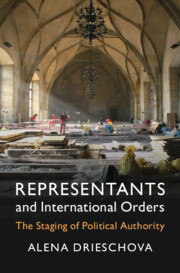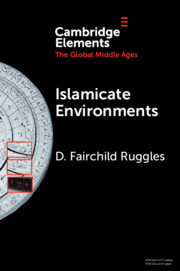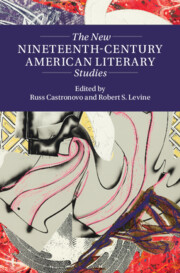Refine search
Actions for selected content:
73 results
Out of the Temples and into the Streets: Reassembling the Christianisation of Roman Urban Space
-
- Journal:
- Antichthon , First View
- Published online by Cambridge University Press:
- 03 October 2025, pp. 1-25
-
- Article
-
- You have access
- Open access
- HTML
- Export citation
Digital im/materiality and the securitisation of cyber
-
- Journal:
- European Journal of International Security , First View
- Published online by Cambridge University Press:
- 15 September 2025, pp. 1-20
-
- Article
-
- You have access
- Open access
- HTML
- Export citation
Chapter 9 - Loss and Dispossession in American Writing of the Great Depression
- from Part II - Histories
-
-
- Book:
- Money and American Literature
- Published online:
- 03 July 2025
- Print publication:
- 17 July 2025, pp 158-174
-
- Chapter
- Export citation
Making Philosophy Matter
- Part of
-
- Journal:
- Public Humanities / Volume 1 / 2025
- Published online by Cambridge University Press:
- 02 June 2025, e99
-
- Article
-
- You have access
- Open access
- HTML
- Export citation
Earth’s Love Letters: Locating loving pedagogies
-
- Journal:
- Australian Journal of Environmental Education / Volume 41 / Issue 2 / May 2025
- Published online by Cambridge University Press:
- 23 May 2025, pp. 226-248
-
- Article
-
- You have access
- Open access
- HTML
- Export citation

Representants and International Orders
- The Staging of Political Authority
-
- Published online:
- 15 May 2025
- Print publication:
- 08 May 2025
‘To every thing turn turn turn’: a commentary on new materialisms in (early childhood) music education
-
- Journal:
- British Journal of Music Education , First View
- Published online by Cambridge University Press:
- 14 May 2025, pp. 1-13
-
- Article
- Export citation
2 - Stability and Change of International Orders
- from Part I
-
- Book:
- Representants and International Orders
- Published online:
- 15 May 2025
- Print publication:
- 08 May 2025, pp 26-64
-
- Chapter
- Export citation
1 - Introduction
- from Part I
-
- Book:
- Representants and International Orders
- Published online:
- 15 May 2025
- Print publication:
- 08 May 2025, pp 3-25
-
- Chapter
- Export citation
12 - ‘The Critic Is Not the One Who Debunks, but the One Who Assembles’
- from People, Practices, and Performance
-
-
- Book:
- Ways of Seeing International Organisations
- Published online:
- 17 April 2025
- Print publication:
- 24 April 2025, pp 227-246
-
- Chapter
-
- You have access
- Open access
- HTML
- Export citation

Islamicate Environments
- Water, Land, Plants, and Society
-
- Published online:
- 08 February 2025
- Print publication:
- 06 March 2025
-
- Element
- Export citation
Chapter 13 - A Periodical Masquerade
-
-
- Book:
- The New Nineteenth-Century American Literary Studies
- Published online:
- 02 January 2025
- Print publication:
- 23 January 2025, pp 186-202
-
- Chapter
- Export citation
Chapter 8 - New Materialisms and Scalar Collapse in Nineteenth-Century American Literary Studies
-
-
- Book:
- The New Nineteenth-Century American Literary Studies
- Published online:
- 02 January 2025
- Print publication:
- 23 January 2025, pp 114-127
-
- Chapter
- Export citation
Chapter 6 - Conjuring Nineteenth-Century Black Environmentalism
-
-
- Book:
- The New Nineteenth-Century American Literary Studies
- Published online:
- 02 January 2025
- Print publication:
- 23 January 2025, pp 83-97
-
- Chapter
- Export citation

The New Nineteenth-Century American Literary Studies
-
- Published online:
- 02 January 2025
- Print publication:
- 23 January 2025
The Materiality of Children’s Imaginative Sense-making in Climate Change Education
-
- Journal:
- Australian Journal of Environmental Education / Volume 40 / Issue 4 / August 2024
- Published online by Cambridge University Press:
- 10 October 2024, pp. 770-783
-
- Article
-
- You have access
- Open access
- HTML
- Export citation
Planty Childhoods: Theorising with a Vegetal Ontology in Environmental Education Research
-
- Journal:
- Australian Journal of Environmental Education / Volume 40 / Issue 2 / April 2024
- Published online by Cambridge University Press:
- 26 September 2024, pp. 243-257
-
- Article
-
- You have access
- Open access
- HTML
- Export citation
Solitary But Not Alone: Materialising Boundaries at a Distance with a Leafcutter Bee’s Nest
-
- Journal:
- Australian Journal of Environmental Education / Volume 40 / Issue 2 / April 2024
- Published online by Cambridge University Press:
- 26 September 2024, pp. 231-242
-
- Article
-
- You have access
- Open access
- HTML
- Export citation
God’s Body and the Material Turn: Divine (Im)Materiality in Biblical Theophanies
-
- Journal:
- Harvard Theological Review / Volume 117 / Issue 3 / July 2024
- Published online by Cambridge University Press:
- 01 October 2024, pp. 607-630
- Print publication:
- July 2024
-
- Article
- Export citation
BinaryTech in motion: The sexgender in the European Court of Human Rights jurisprudence
-
- Journal:
- Leiden Journal of International Law / Volume 37 / Issue 3 / September 2024
- Published online by Cambridge University Press:
- 09 May 2024, pp. 630-648
-
- Article
-
- You have access
- Open access
- HTML
- Export citation
